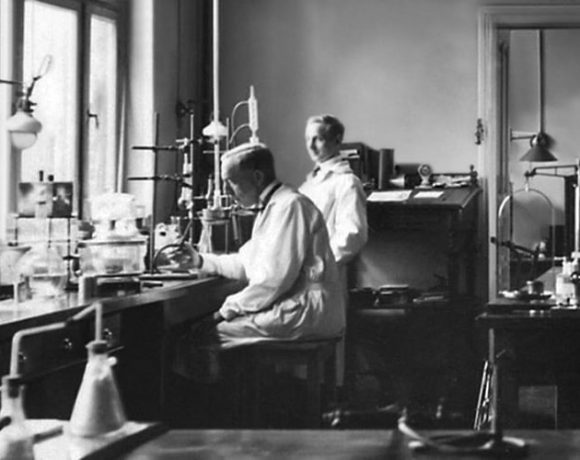How was Nivea, the world's first skin care cream born?
Beiersdorf, which produces Nivea, experiences two suicides and two great wars. Since it was a Jewish firm in the second war, it became the target of the Hitler regime. But the following is a success story:

How was it start?
It's all about pharmacist and visionary entrepreneur Dr. Oscar Troplowitz in 1911, chemist Dr. It started with realizing the potential in Eucerit, an emulsifier developed by Isaac Lifschütz.
Eucerit made it possible to combine water and oil into a stable cream and was originally intended for use in medicine. Dermatologist Prof. Dr. Paul Gerson Unna, admiring the expertise Dr. Lifschütz has acquired in his field, he sends him to Dr. Troplowitz who he introduced him. Troplowitz realized that a water-in-oil emulsion would make an excellent base for a cosmetic skin cream. Now all it took was a name.
And to come up with a name, Dr. Troplowitz didn't need to look any farther than the cream itself. Inspired by its snow-white color, he named NIVEA: a name derived from the Latin words nix (snow) and nivis (snow).
Finally, years of research and creativity had proved successful. NIVEA was launched in December 1911. The first skin care cream was born.
From the beginning, Troplowitz's goal was to develop high-quality products that are suitable for everyone.
Just three years after NIVEA Creme was first launched in Hamburg, it was available on every continent and almost half of NIVEA sales came from abroad. At the time, such rapid international expansion was unheard of in the skincare industry.
By the 1960s, as economic prosperity and automobile ownership increased, more and more people spent their vacations by the sea, and beach culture exploded. NIVEA was there to help people who spend most of their time in the sun. "NIVEA caravans" were common at international resorts in the 1960s and 70s, and the now iconic NIVEA balls were given to anyone who brought a NIVEA sunscreen product to the beach. The demand for these cannons was so high that sometimes the caravans couldn't even make it to the beach - they were robbed before they got there!
Meanwhile, it was also time that scientists began to make the connection between skin damage such as sun exposure, skin cancer, and premature aging. These discoveries have encouraged our researchers to develop breakthrough products that will protect people from these effects and make it easier for them to enjoy the sun safely.
Suicides and difficulties
Beiersdorf, which produces Nivea, experiences two suicides and two great wars. As if it wasn't enough that the Hitler regime became the target of the Hitler regime because it was a Jewish firm in the second war, the allied forces confiscated their assets in other countries. The company, which provided 40 percent of its sales from exports before the war, remained naked and started to collect international brand rights starting from 1952 after the war. This operation, which started in the Netherlands, ends in 1998 with the acquisition of a Polish company.
The founder of the Beiersdorf firm was actually Hamburg-based pharmacist Paul Carl Beiersdorf. He founded the company in 1882 and patented the medical plaster he developed. After his son's suicide in 1890, he sold his laboratory to Oscar Troplowitz, who himself committed suicide in 1896. Troplowitz developed the firm with brand new inventions. In 1901 he produced the first adhesive plaster "Leukoplast", in 1909 the first lip balm in the form of a lipstick tube, "Labello" and toothpaste. After the launch of Nivea in 1911, Troplowitz died in 1918. When World War I began, Beiersdorf had factories in Argentina, Australia, Denmark, France, Mexico, Russia and the USA. Exports accounted for 40 percent of its sales. However, with the war, all international operations stopped. Nivea was first packaged in the famous blue box in the 1920s. In 1922, Hansaplast, the first ready-to-use plaster, was launched. Inventions continued with the first stretch film "tesa" in 1936. In the mid-1930s, Allianz Insurance bought a stake in Beiersdorf.
In the Second World War, all of its assets in foreign countries were confiscated, and after the 1950s, the company introduced new products; Like 8 x 4 deodorant soap and Atrix hand cream. The Herz Family, owner of Tchibo Holding, bought a quarter of Beiersdorf in 1974. In the same year, the company consolidated its operations into three main product groups: Cosmetics and skin care, health products and adhesive tape and packaging materials. From 1989 onwards, Beiersdorf narrowed its product range and focused on skin care, especially the Nivea brand. Nivea has care products ranging from sunscreen to shampoo and deodorant.
